COVID-19 Insights: The War Against Chronic Pain Rages On for Many Canadians
Chronic pain is the norm for 20% of Canadians, impacting 1 in 2 households across the country
One in five Canadians are living with chronic pain. When left unmanaged, it can lead to sleeplessness, depression and anxiety, lower quality of life, and isolation, and in extreme cases, poverty, homelessness and even suicide.
This is supported by our research, which indicates that 51% of Caddle respondents or someone close to them suffer from chronic pain and related issues:
- 75% of respondents suffer from headaches; 25% of those get them “often.”
- 52% of respondents suffer from migraines; nearly 25% of those experience them “sometimes” and a further 11% “often.”
- 52% of respondents suffer from arthritis pain; almost 10% of those “always” have pain and a further 30% “often” or “sometimes” do.
- 69% of respondents suffer from anxiety.
- 61% of respondents suffer from the blues (i.e., feeling sad and helpless); 30% experience it “sometimes,” while a further 23% deal with it “often”/“always.”
HOW ARE CANADIANS MANAGING THEIR CHRONIC PAIN TODAY?
Unsurprisingly, over the counter (OTC) medication and/or licensed prescriptions are the first line of defense for many Canadians—in part due to the broad availability and overall familiarity with these types of products.
Among the 51% of our 9,000-strong audience who suffer from chronic pain (or have someone close to them who does), almost a quarter manage it using OTC products, while a further 10% take prescribed medication for this purpose.
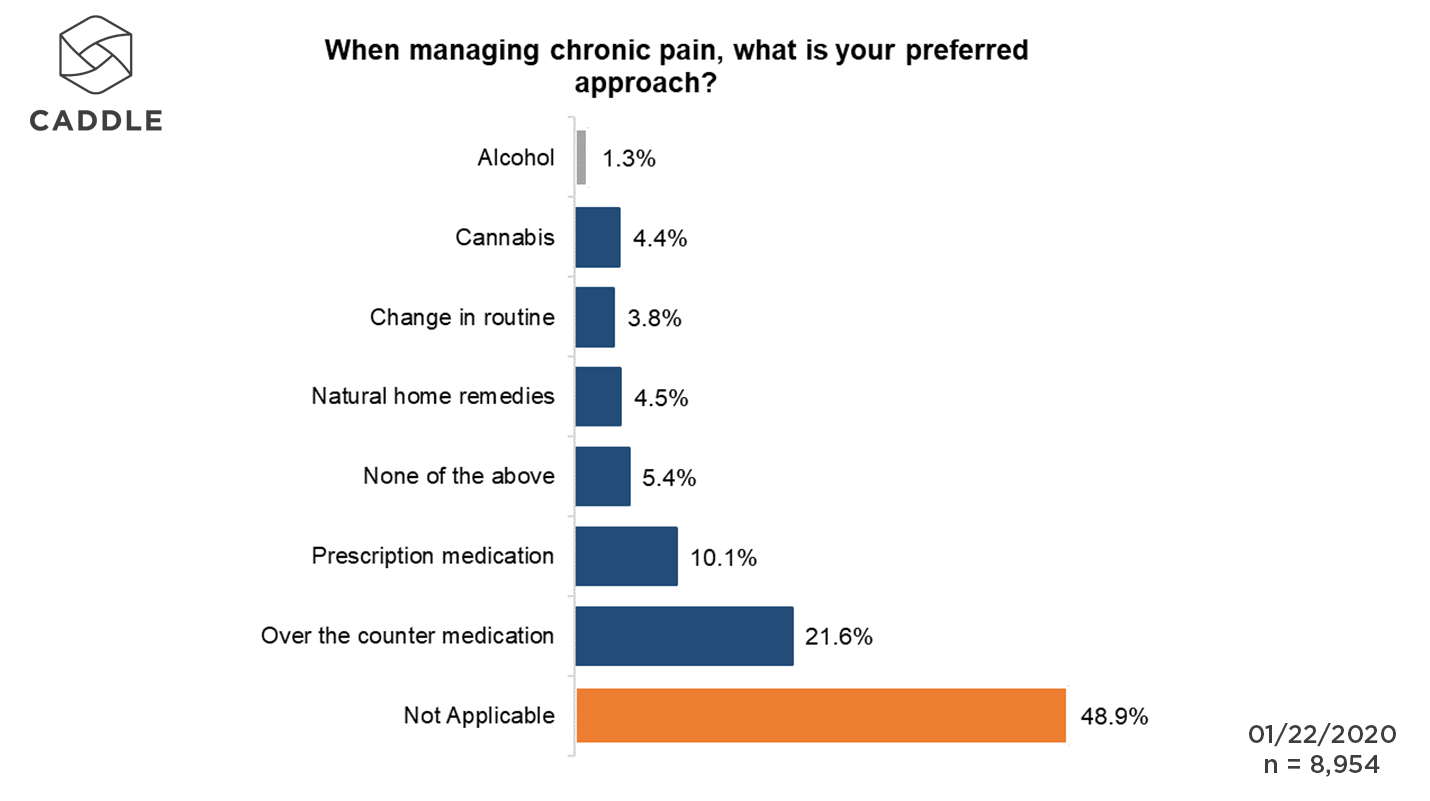
In terms of medication consumption, the vast majority of Caddle users (84%) are familiar with the benefits of OTC pain relievers, while almost 50% are likely to try new pain relief products. (Among those, Gen Zers in Quebec, Manitoba, Ontario, Alberta and British Columbia are least likely to try new OTC pain products, while Baby Boomers in the Maritime provinces, Saskatchewan and Ontario are most likely.)
And, while only 4.4% of respondents identified cannabis as their method of choice for managing chronic pain, additional survey results indicate that nearly 20% of people would try edible cannabis products based on doctor referral.
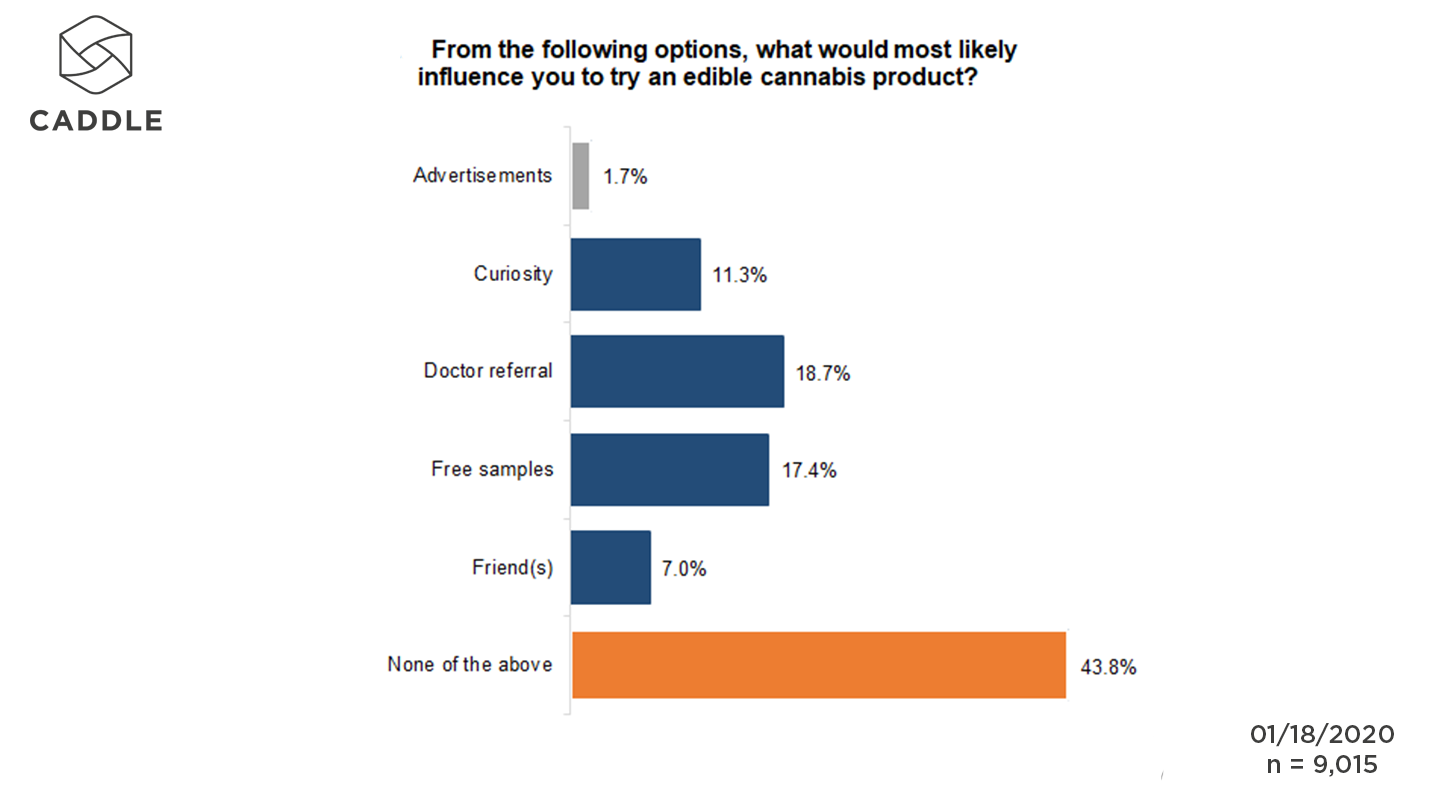
Meanwhile, a simple Google Trends or Reddit search uncovers the fact that Canadians are increasingly interested in potential pain-relieving benefits of CBD-based products.
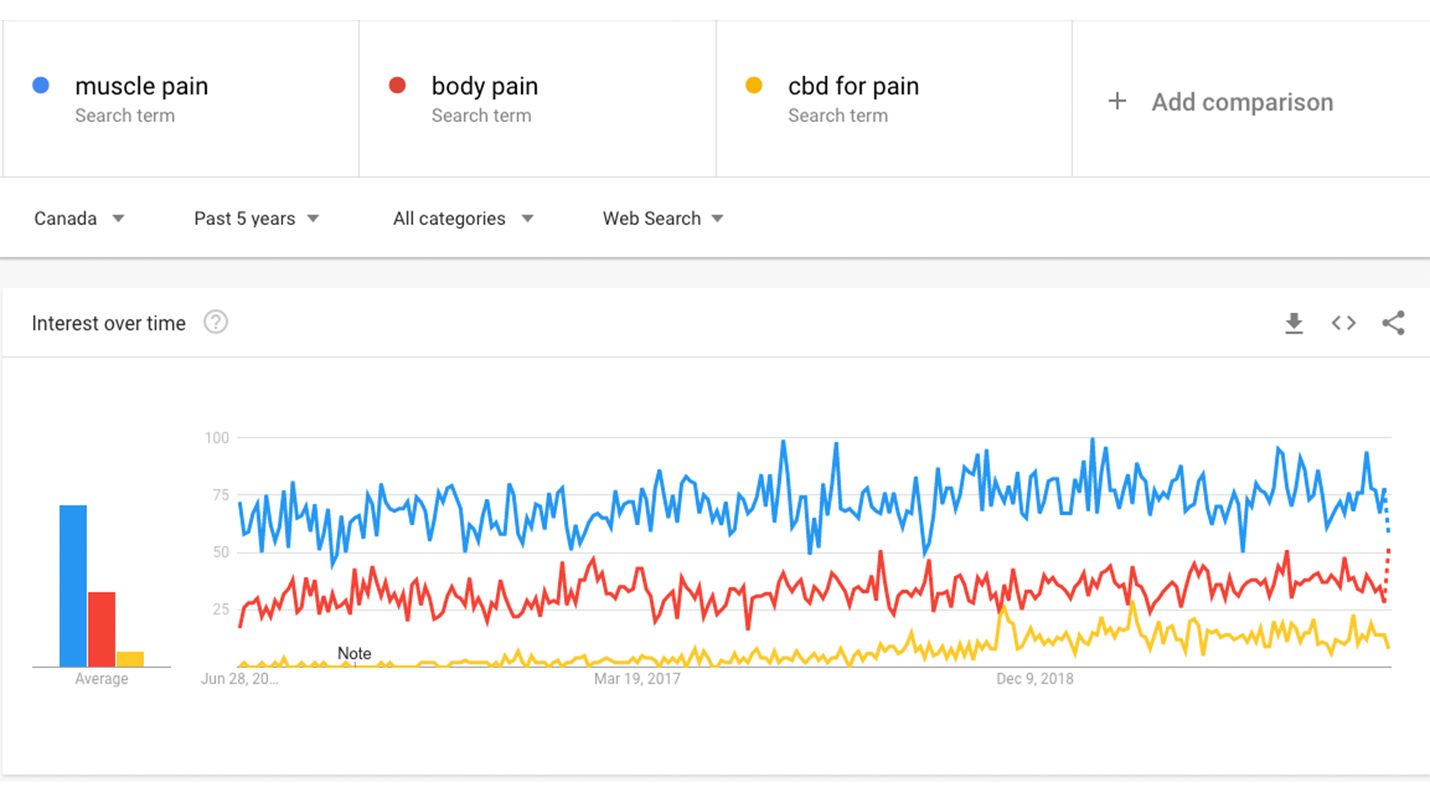
Note, especially, the uptick in searches for “CBD for pain” over the last few months—perhaps an indication of the co-existence of COVID-19 symptoms and consideration of CBD use for muscle aches and pains, or alternatively, reinforcing the use of CBD-based products for the secondary symptoms of chronic pain, such as anxiety and depression, which have been affecting more people under COVID lockdown.

HOW HAS COVID-19 AFFECTED PEOPLE SUFFERING WITH CHRONIC PAIN?
Issues around COVID-19 and chronic pain are beginning to intersect: We’ve learned that COVID-19 can infect just about anybody but is especially dangerous for older adults, young children, and people in marginalized communities. Chronic pain, too, is most common among older adults, children and adolescents, Canada’s Indigenous Peoples (including First Nations, Métis and Inuit populations) and other populations affected by social inequities and discrimination.
Not coincidentally, conditions like depression, anxiety and social isolation have been shown to cause chronic muscle aches and body pain. With the increased incidence of anxiety, depression and loneliness in Canadians due to the financial worry, employment impact and exposure to COVID-19, there’s a high likelihood that people across the country are feeling the effects of the pandemic, both mentally and physically.
If a second wave of COVID hits Canadian communities (as it’s predicted to, in Fall 2020), there could be an interesting synchronization and likely exacerbation of people’s chronic pain and related conditions, especially among increasingly susceptible, older age groups and marginalized populations.
WHAT OTHER THINGS ARE RESPONDENTS DOING TO ALLEVIATE THEIR CHRONIC PAIN SYMPTOMS?
Numerous sources, including the Canadian Pain Task Force, identify various pain management options beyond pharmaceutical interventions. These include modified diet and exercise plans.
Our research bears this out, as the majority of Caddle users indicate they’re likely to take proactive steps towards improving their health, including 48% of respondents who are willing to exercise more often and an additional 31% who are willing to change their eating habits.
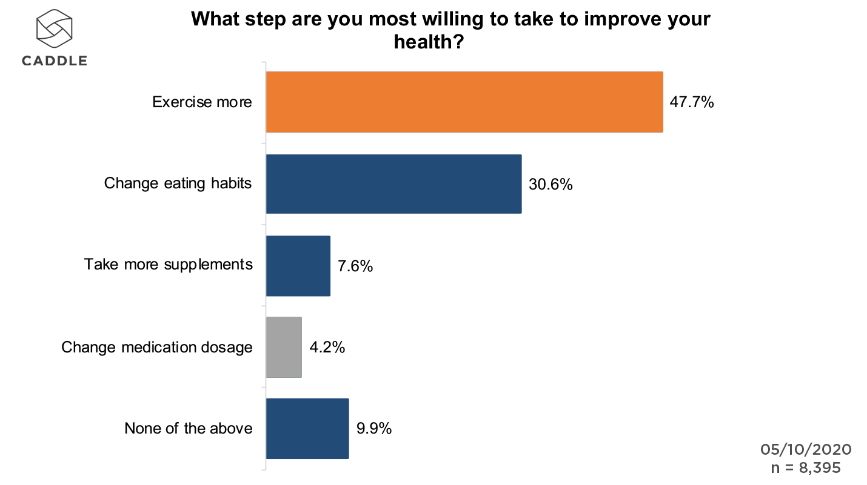
Breaking this down further, over a third of Caddle respondents agree that regular exercise is important to them, and it plays a “moderate” to “very large” role in 62% of respondents’ lives.
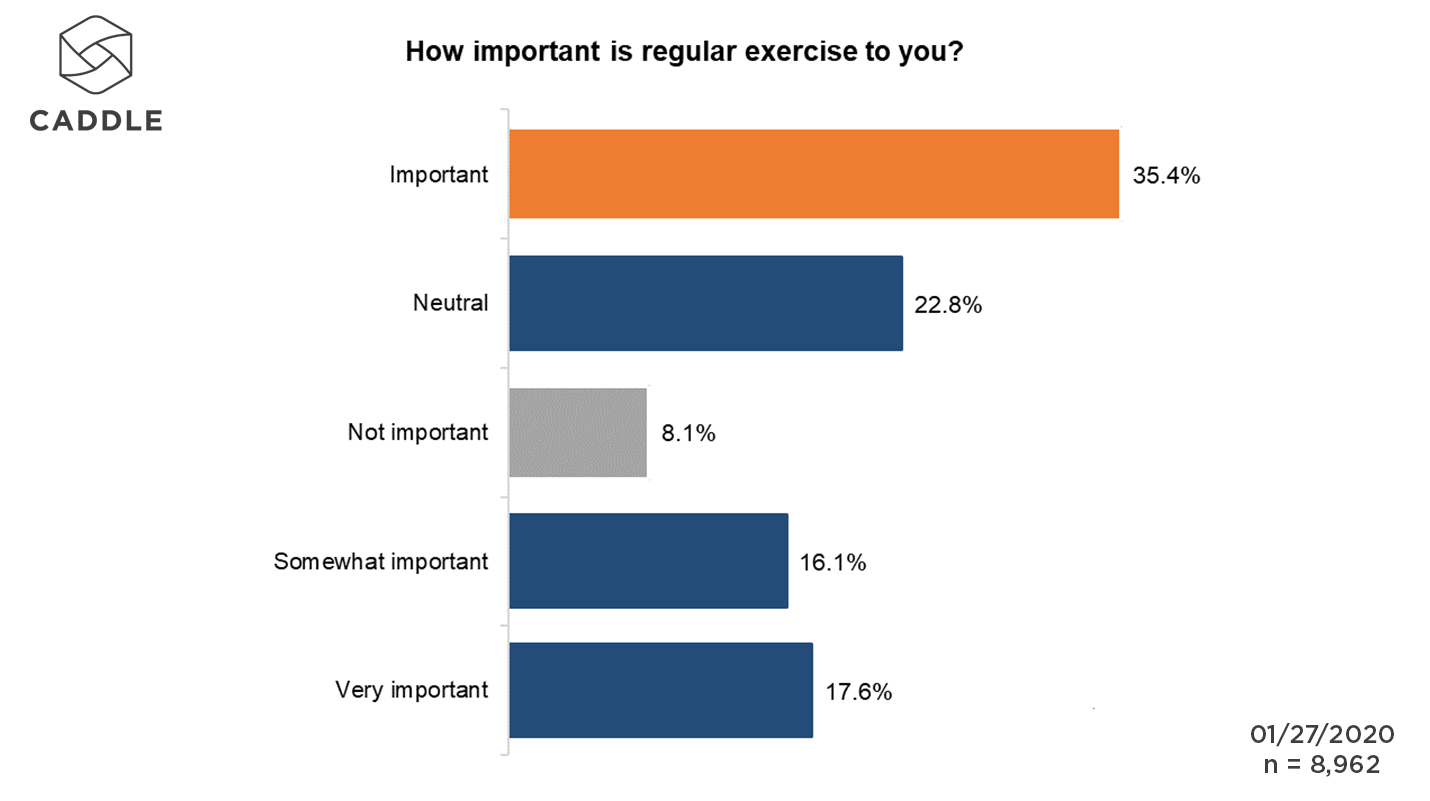
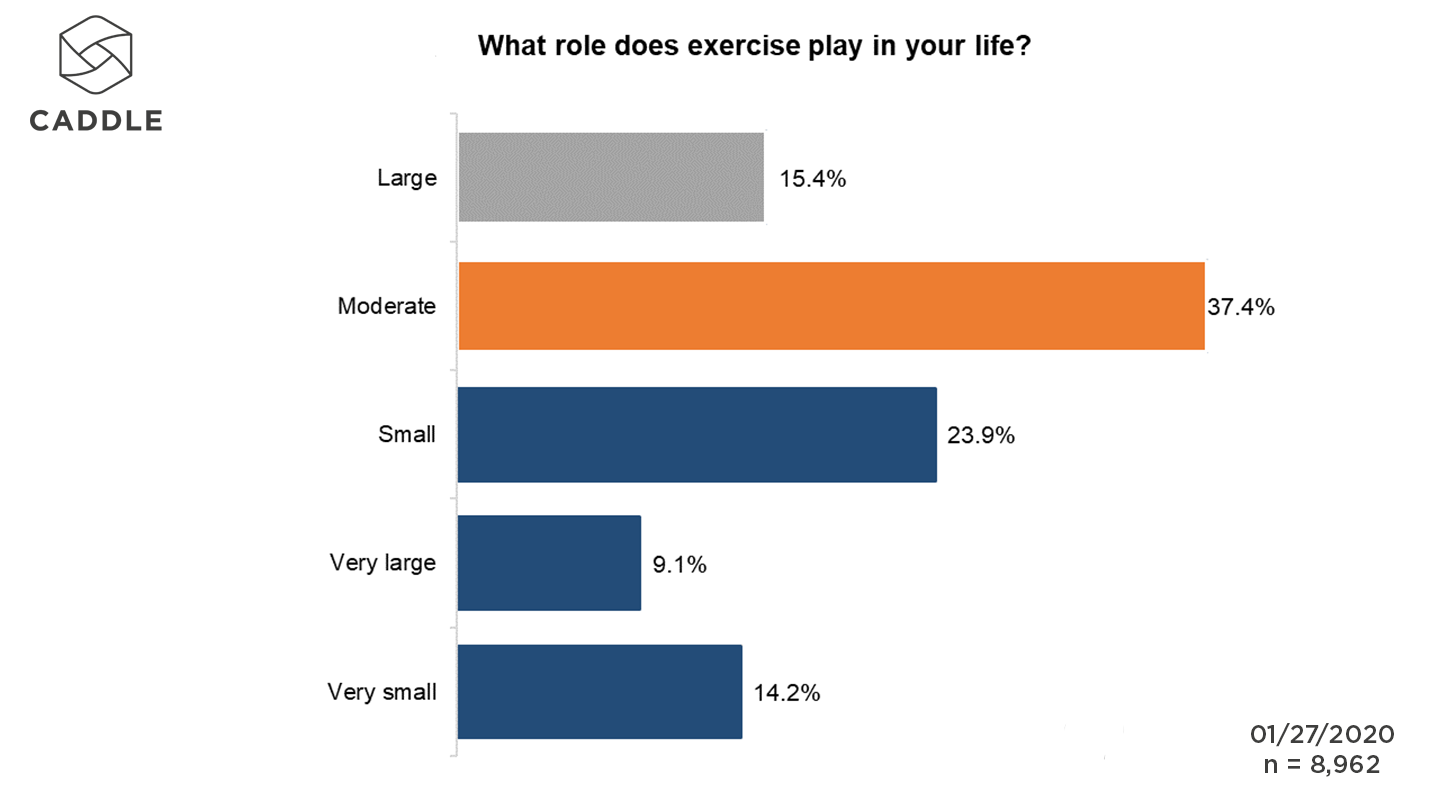
From a healthy eating perspective: We’ve seen that older generations are less likely to change their eating habits. What’s more, the Greatest Generation and Boomers tend to lag behind in their knowledge of diet regimens that can help in the management of chronic pain, such as anti-inflammatory diets.
If older generations are, for the most part, uninterested in adapting their eating habits, and many will continue to medicate to manage their chronic pain, this could result in a nice boom for drug makers—especially those who are able to address the underlying conditions that cause chronic pain as well as the anxiety and depression that tend to plague patients with pain symptoms.
KEY TAKEAWAYS
CANADIANS ARE EAGER TO TRY “NEW” PAIN-RELIEF SOLUTIONS
Whether in the form of prescribed drugs or OTC products, doctor-recommended remedies are still #1 for more Canadians when it comes to managing chronic pain.
Yet, at the same time, certain demographics are open to solutions that fall outside of the mainstream. Taking into account the 50% of respondents who are likely to try new pain-relief products, then, it makes sense that people with friends who consume cannabis products would be more likely to try these alternative solutions without a doctor’s referral.
As such, marketers will need to make a bigger push—and use authoritative data from medical professionals to back it up—if they’re going to see cannabis products pick up a greater share of the pain-relief market moving forward.
CBD PRODUCTS ARE DEVELOPING A MARKET IN PAIN MANAGEMENT
Though CBD isn’t without its own issues, all indications suggest that consumer interest is flourishing, and the category is only going to continue to grow in availability and consumer uptake.
As more cannabis-based products enter the Canadian marketplace, traditional OTC manufacturers will need to keep a keen eye on innovation—watching in-store planograms as well as new products being launched direct-to-consumer on sites like Amazon—to consider how they can stake a bigger claim in the cannabis-for-pain-relief arena.
INCREASED ANXIETY DUE TO COVID-19 IS FUELLING CHRONIC PAIN (AND VICE VERSA)
Even if younger generations are much more likely to transition to a healthier diet and a more active lifestyle—both of which could lead to lower rates of chronic pain—they may still experience symptoms associated with the condition, especially under the unprecedented circumstances dictated by the ongoing COVID scare.
Experiencing frequent feelings of fear, worry and anxiety can impact the body in real ways, contributing to muscle tension and pain.
Marketers who are trying to relieve Canadians’ chronic pain struggles are best to pursue a holistic approach that considers how different generations are affected by both physical and psychological symptoms of pain and how those individuals prioritize the pain-relief options available to them.
